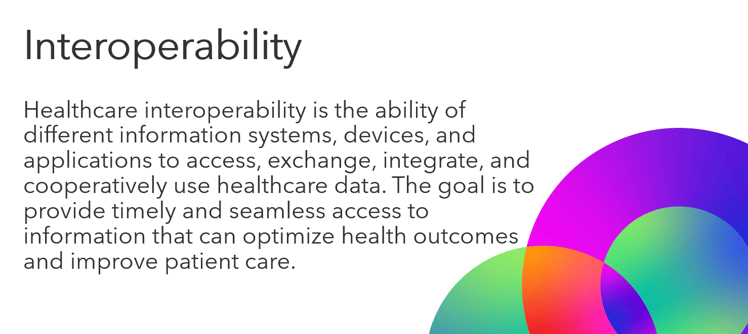Standardization, Data Governance Matter More than Ever in Healthcare IT

The benefits of predictive analytics in healthcare are well established: Health systems and payers are already showing how valuable it is to provide clinicians with insights at the point of care using current population data.
For example, early in the COVID-19 pandemic when answers were in short supply, analytics on a population-wide level provided key insights for public health leaders and clinicians who needed to make timely decisions about infection. As an everyday example, analytics helps hospitals identify at-risk patients in their homes to prevent readmissions.
The ability to connect and share such data reflects progress toward the level of data governance needed to advance on all fronts of the Triple Aim:
- Improve the patient experience of care (including quality and satisfaction)
- Improve the health of populations
- Reduce the per capita cost of healthcare
However, hurdles remain in health systems’ and payers’ quest to advance toward maturity in their data governance efforts.
How interoperability challenges affect data governance
Many health systems have struggled to achieve quality and cost improvements, even after investing heavily in an electronic health records (EHR) system and other digital technologies. Too often, the processes that are successful in one department or area are challenging to replicate enterprise wide.
Why is this such a widespread problem? Often health systems don't use a single health record solution, which prevent them from achieving a shared data structure system wide. It’s the reason why lack of interoperability is still cited as the number-one complaint about EHR systems. Even after years of talk in the healthcare industry about the need to improve interoperability, progress is slow.

Information governance is key
Establishing sound data governance structures is a key to success in achieving interoperability and mining the value of data using advances like predictive analytics. Healthcare professionals don’t need to wait for new technical solutions to be developed. In fact, many of the solutions they need are here now. But for these technologies and methodologies to reach their full potential, we must deploy them using a collaborative approach that standardizes and “normalizes” data and terminology.
How can your health system develop or refine information governance standards?
To begin, review the American Health Information Management Association’s (AHIMA) guidelines, which are reflected in its Information Governance (IG) Adoption Model.
According to the model, the goal is to break down silos and create practices that are consistent among all segments of the health system workforce for all types of information.
The benefits that flow from an effective data governance project extend beyond the success of any individual project. Organizations with mature data governance programs recognize the challenge of managing the information needs of their diverse stakeholder community. They're also aware of the business value that comes from managing data as an enterprise asset.
A consistent approach to information and data standardization throughout the enterprise can lead to better decision making by leaders in all departments, and thus foster better patient outcomes and better cost efficiencies.
The potential in predictive analytics for providers
There’s a great deal to be gained from data standardization efforts. Health systems and healthcare payers have taken enormous steps forward in recent years. A vast amount of data is available and ready to be populated in, or connected to, solutions that facilitate improved clinical, operational, and financial decision making.
For example, at symplr, we’re excited about what the Midas Health Analytics Solutions can deliver to healthcare administrators and clinicians. For example, our customers use it to:
- Predict readmission rates and identify the relationship between readmissions and mortality rates. For example, if readmissions have stabilized but mortality rates have increased, administrators and clinicians can use dashboards to identify potential causes.
- Identify trends and bring them to the attention of clinicians and administrators. Perhaps there are standing orders for knee surgery patients to be discharged on the second day. But if the data shows that 40% of patients return with an infection or other issue, our customers (hospitals/providers) are notified that their order set for knee replacements may not be on target.
At symplr, we look forward to collaborating with all of our partners as we develop our latest solutions and implement successful pilot programs that deliver scalable benefits across health system enterprises.
